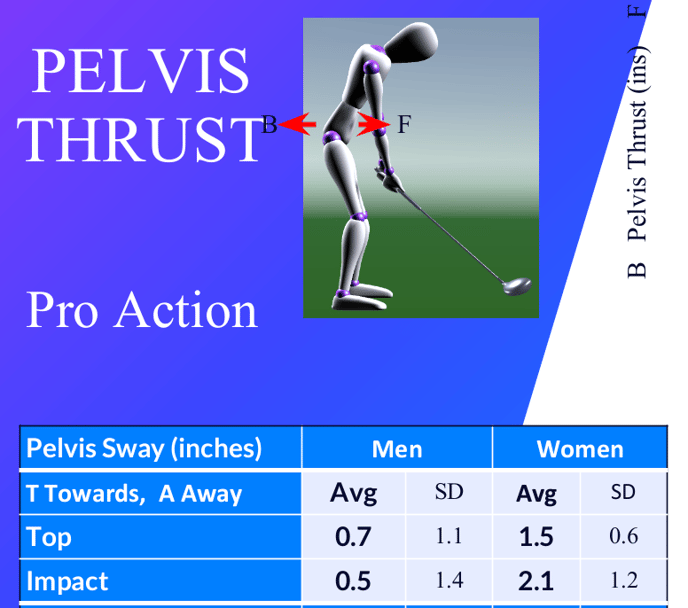Did you know 67% of golfers deal with Early Extension? THIS is why you're losing power and consistency.
According to TPI, Early Extension is "any forward movement (thrust) of the lower body towards the golf ball during the downswing." Ideally, the golfer’s lower body should stay balanced and rotate through the swing, but with early extension, the body pushes up and forward.

When early extension happens, a golfer’s arms and club get left behind the body, causing the lower body to rise or thrust forward during impact. This movement brings the body closer to the ball, limiting space for the arms in the downswing and creating a chain reaction of inconsistencies, causing unpredictable shots. For a right-handed golfer, these issues can appear as blocked shots to the right or hooks to the left, along with a noticeable loss of distance.
Why should I care?
🚀 Eliminate your two way miss — the block to the right and a hook to the left (for R-handed golfers)
🚀 Avoid feeling trapped at impact due to the lower body moving closer to the ball in the downswing
🚀 Create space for your arms and club in your downswing, which forces your torso to elevate at impact
What should I look for?


After studying 100+ swings of professional golfers, we’ve identified the pro’s pelvis thrust numbers at each part of the swing.
The optimal motion is when the pelvis thrusts a little forward during the backswing, backwards in the downswing, forward again into impact. It continues thrusting towards the ball through the follow through.
Doing both successfully will increase your consistency and improve impact quality.
How to Monitor and Improve:
To measure your Pelvis Thrust at impact, simply head to the Sportsbox 3D Golf app and take a recording of your swing (down the line (dtl) view). Once you’ve recorded, select the Pelvis Thrust at IMP indicator. This metric shows the forward or backward movement of your pelvis. It is set to 0 at address and is negative when the pelvis is pushed farther away from the ball at address. It is negative when there's movement forward, closer to the ball than at address.
 This is the impact of a novice golfer. She has 2 more inches of pelvis thrust towards the ball than at address. She may feel stuck or trapped in this position and see the result of a block or hook.
This is the impact of a novice golfer. She has 2 more inches of pelvis thrust towards the ball than at address. She may feel stuck or trapped in this position and see the result of a block or hook.

This is the impact position of Bryson DeChambeau, Sportsbox Partner. Although there is only a 0.8 inch difference between Bryson and the novice golfer, this makes a big difference in the quality of the shot. The ideal range for a male golfer of Bryson's stature is -0.9" to 1.7".
Improving your Early Extension:
Try out these exercises provided by Perform for Golf (P4G). Click on the exercise names to watch a TPI certified P4G trainer demonstrate the movements.

- Pelvic Rotation: This pelvic rotation exercise helps increase pelvis mobility, and in turn, increases mobility for the pelvic turn in the golf swing.
- Single Leg RDL: This RDL strengthens your glutes, hamstrings, and back. This will help create balance and increase awareness for engaging these muscles in the golf swing.
- Glute Bridge: The glute bridge builds control of the pelvis and strengthens the hamstrings and glutes. This exercise is also known to decrease back pain.
These three exercises are great examples of what would decrease your early extension to increase your power & consistency. To find more information about golf-centric performance exercises, check out Perform for Golf’s (P4G) website.
